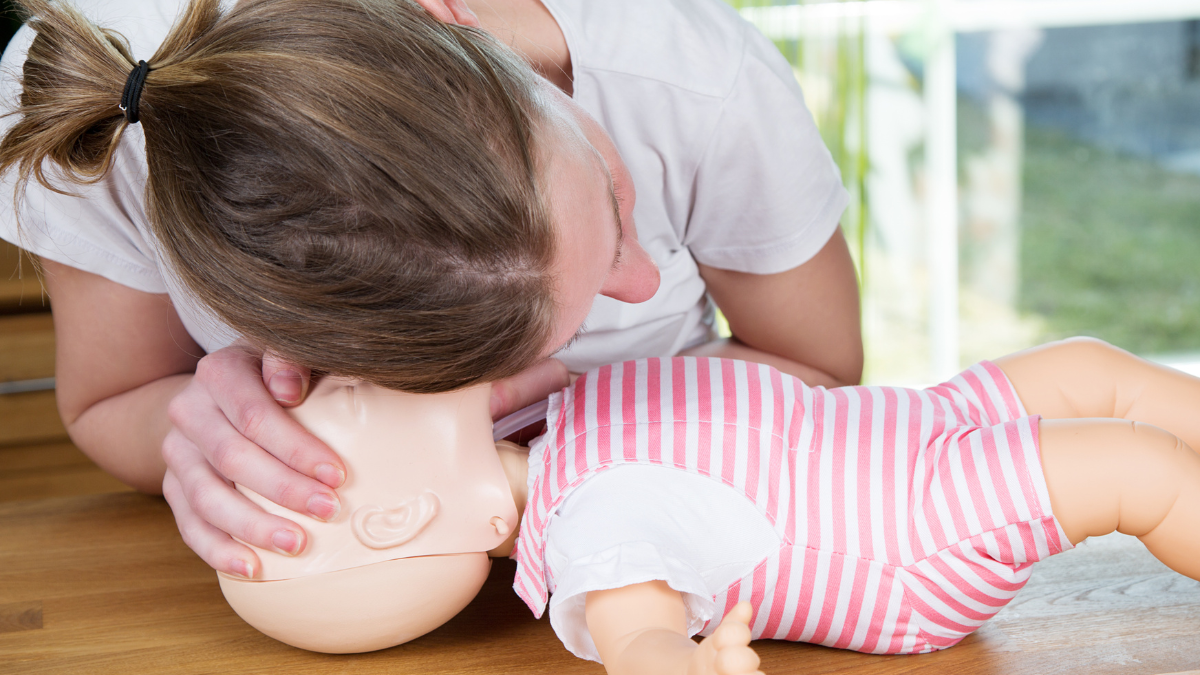
CPR for your baby is such an important skill to know. Time is very important when we have an unconscious little one, damage begins after only a few minutes without oxygen. Knowing how to react and what to do can save a little one’s life. Early interventions, such as CPR, can significantly increase a little one’s chance of survival. Of course, we hope these things never happen to us and that we are never faced with an emergency like this, but the reality is these things do happen and no one is immune.
You would always want to make sure that your little one is on a firm flat surface and that you have removed their top so you can see the chest to landmark properly. The steps below are for baby CPR so that would be a little one from newborn up to 12 months of age.
To administer a breath of air you would want to tilt babies head back slightly and cover your babies nose and mouth with your mouth. Give a little puff of air, over about 2 seconds, just enough air in to see their chest rise appropriately.
For a conscious choking baby, you would do a combination of back blows and chest compressions. If a baby that is choking goes unconscious then we do baby CPR with the exception of looking in their mouth for the object after the compressions before we give the breaths.
Baby CPR is definitely something that should be on every parents and caregivers resume! We should know how to respond to an emergency like this and feel comfortable initiating CPR.
© 2023 All rights reserved Baby & Toddler - part of parent promotions